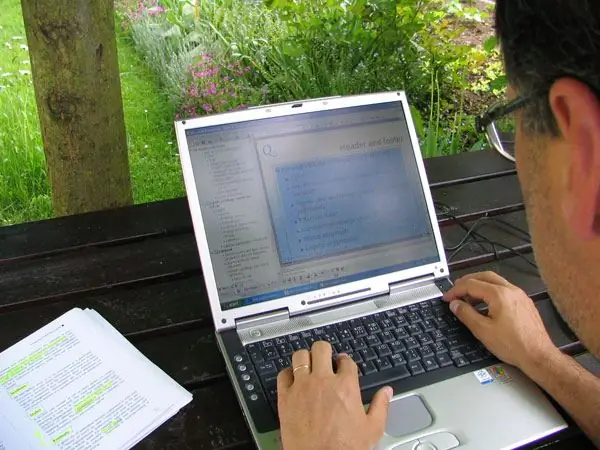The easiest way to create a custom lettering on the desktop is to apply it directly to the background image. To do this, you can use any graphics editor that is installed on your computer.

Necessary
Any graphics editor
Instructions
Step 1
Find the file that contains the picture your system uses as your desktop background. By default, such images are placed in the WINDOWSWebWallpaper folder on the computer's system drive.
Step 2
If the OS settings do not allow you to see the files in this folder, then change them - open the "Tools" section in the Explorer menu, select "Folder Options" and go to the "View" tab. Then find the line "Hide protected system files" in the list of "Advanced options", uncheck the checkbox and click the "OK" button.
Step 3
Start a graphics editor - standard Paint, Photoshop or any other.
Step 4
Load the image into the editor, the location of which you determined in the previous steps. To do this, in any editor, just press the CTRL + O key combination, in the dialog box that opens, go to the folder containing the file, select it and click the "Open" button.
Step 5
Write the text of the inscription in the desired place in the image. This procedure may differ depending on the editor used. For example, in Photoshop, the Horizontal Text tool is activated by simply pressing the T key (this is a Latin letter) or by clicking on the T icon in the toolbar. After you type the text of the inscription, in Photoshop you need to click the very first icon in the list of tools ("Move") and drag the text with the mouse to the desired place. You can change the typeface, size, color, style, distance between letters and other parameters of the inscription if you expand the "Window" section in the menu and select the "Symbol" line. This action opens a panel on which all these settings are located.
Step 6
Save the overlaid background image file. To do this, in Adobe Photoshop, press the key combination alt="Image" + CTRL + SHIFT + S, in the window that opens, visually select the most optimal quality settings and press the "Save" button. In the next window, you also need to click "Save" and confirm overwriting the old file with this name. This completes the procedure for applying an inscription to the background image of the desktop - the next time the system boots, you will see the background image in the form you have changed.






